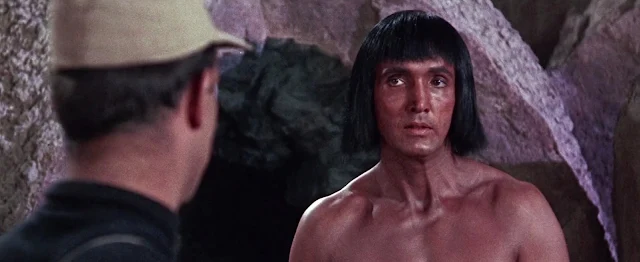 |
| Shirley Booth and Burt Lancaster in Come Back, Little Sheba |
Shirley Booth won an Oscar for her portrayal of Lola Delaney, a middle-aged frump married to an alcoholic chiropractor (Burt Lancaster) she calls "Daddy" or "Doc." We first see Lola coming downstairs in a ratty chenille robe to answer the doorbell; it's Marie Buckholder (Terry Moore), a college student answering an ad for a room Lola has for rent. Marie takes a look at the room and tells her she'll think it over. When Doc finds out that Lola has decided to take in a roomer, he's angry and forbids it. But when Marie returns to say she wants to rent the room, only Doc is home -- Lola has gone out to buy some orange juice for his breakfast -- and when he gets a look at the nubile Marie, he agrees to rent it, along with another downstairs room that Lola calls her "sewing room," though there's no evidence that Lola ever uses it for that. And so begins the film version of the first of William Inge's plays about sexual frustration. The movie would have us believe that Marie rouses a repressed desire in Doc and also makes him want to protect her, as if she were the child he and Lola lost, but as with most of the works by the closeted playwright, it has a strong gay subtext. When Marie, an art student, brings home a classmate, a young athlete named Turk (Richard Jaeckel), to pose for a poster she's creating, Doc is shocked to find the well-built Turk, in a track suit that shows off his muscles, in his living room. He immediately begins professing his concern for Marie's honor, her supposed virginity, but we can sense that he's more than a little aroused by Turk. We learn, too, that Doc was an only child, coddled by his mother and always shy around women, and that it was only because Lola was more than a little sexually forward that he got her pregnant and had to marry her. The real disappointment in the movie is the radical miscasting of Lancaster as Doc. He was 15 years younger than Booth, and no amount of gray at his temples can cover up his athletic vitality and make us believe that the two are supposed to be the same age. Still, despite the screenplay's disingenuousness about sexuality and the stagebound character of its action and dialogue, Booth's performance is worth savoring and there are moments of genuine feeling in the film.






































